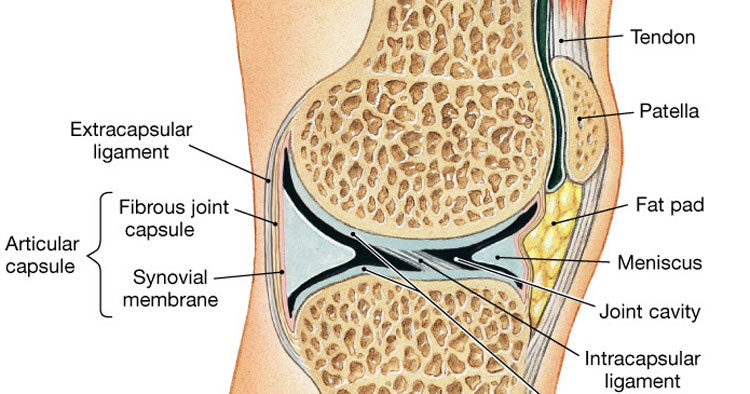Diagnosing Hoffa’s Syndrome
The symptoms associated with Hoffa’s syndrome of the knee (also called fat pad syndrome) can be similar to that of a number of other knee conditions, and
fat pad syndrome can coexist with other knee pathology so as always accurate diagnosis is crucial to allow the appropriate treatment to be initiated. Through a subjective and physical assessment of the knee your physio can develop and understanding of the issue from the symptoms described and the findings following some special tests for fat pad impingement. The use of investigations such as MRI or ultrasound imaging may be used to aid diagnosis, however frequently clinical assessment by your physiotherapist is satisfactory for diagnosing the fat pad as a relevant source of knee pain.
Treating Fat Pad Syndrome
Physiotherapy treatment will hasten your recovery. Treatment of Hoffa’s syndrome frequently starts with reducing and/or modifying aggravating activities and postures coupled with exercises and potentially the use of some form of off loading taping. Treatment modalities frequently used at Sydney Physio Clinic in managing Hoffa’s syndrome may include:
- Restoring soft tissue range of motion, through soft tissue release and stretching (such as stretching the quadriceps in an attempt to reduce the forces tight quadriceps may create at the knee).
- Electrotherapy, dry needling and cryotherapy are all potential approaches offered in an attempt to reduce inflammation and promote healing.
- Off loading taping, or taping to assist patella tracking to improve biomechanics, or reduce impingement.
- Postural stability exercises to improve strength and biomechanics of the trunk, foot and knee.
- Gait and postural re-education. Improving proprioception, dynamic balance which may include landing technique and functional movement patterns including running, squatting, hopping can help in off loading painful areas.
- Anti-inflammatory medicines may be used in some situations to help reduce inflammation of the fat pad. This could be the application of topical creams such as Voltaren Emulgel or oral medications prescribed by your GP.
Treatment modalities are generally directed to reducing inflammation and promoting healing with therapeutic approaches, coupled with looking at approaches to reduce impingement by improving biomechanics and optimising patellofemoral alignment.
Hoff’s Syndrome And Surgery
Ideally fat pad impingement can be settled conservatively, sometimes if these measures fail to achieve satisfactory results and symptoms persist then the use of corticosteroid injections to reduce inflammation and even surgery may be considered.
Preventing Hoffa’s Syndrome
Preventing Hoffa’s syndrome in the average person can be addressed through looking to avoid some simple activities like excessive kneeling, avoiding kicking actions and the judicious use of high heels which seem to place the knee in a position of hyperextenion potentially impinging the fat pad. Improving biomechanics around the knee and lower limb in general as well as controlling excessive forced hyperextension both dynamically and at rest should work to mitigate risks of developing fat pad impingement problems as well as assist in settling the condition once present.
Disclaimer: Sydney Physio Clinic provides this information as an educational service and is not intended to serve as medical advice. Anyone seeking specific advice or assistance on Diagnosing And Treating Hoffa’s Syndrome should consult his or her physiotherapist, podiatrist or general practitioner.


